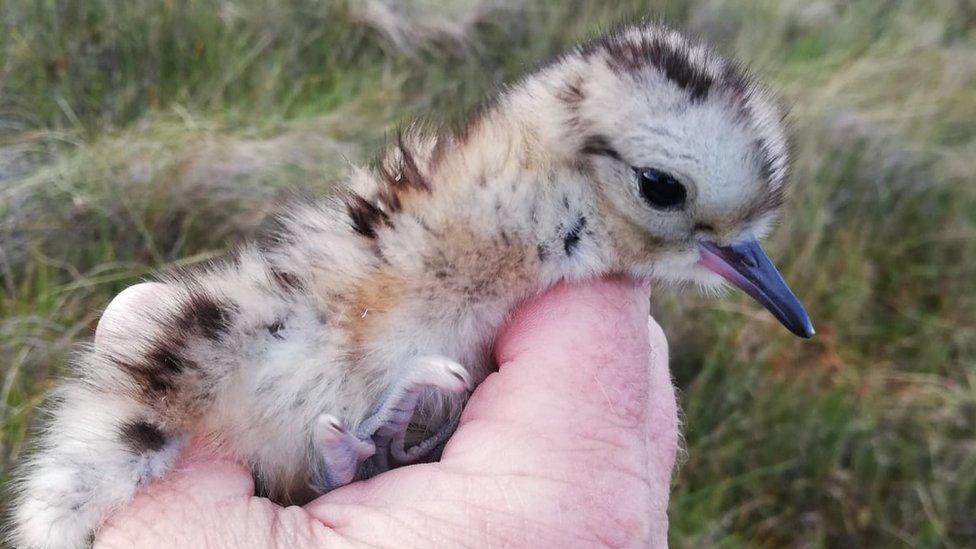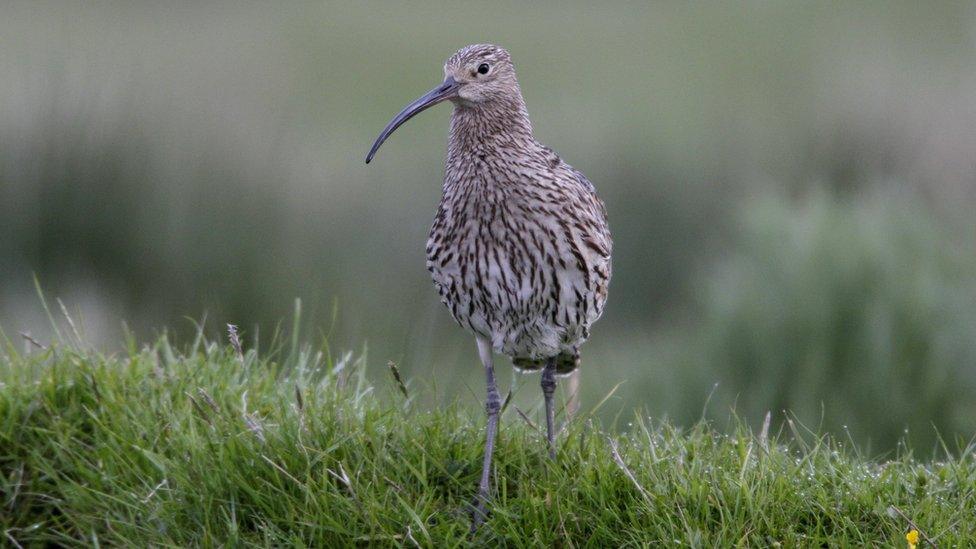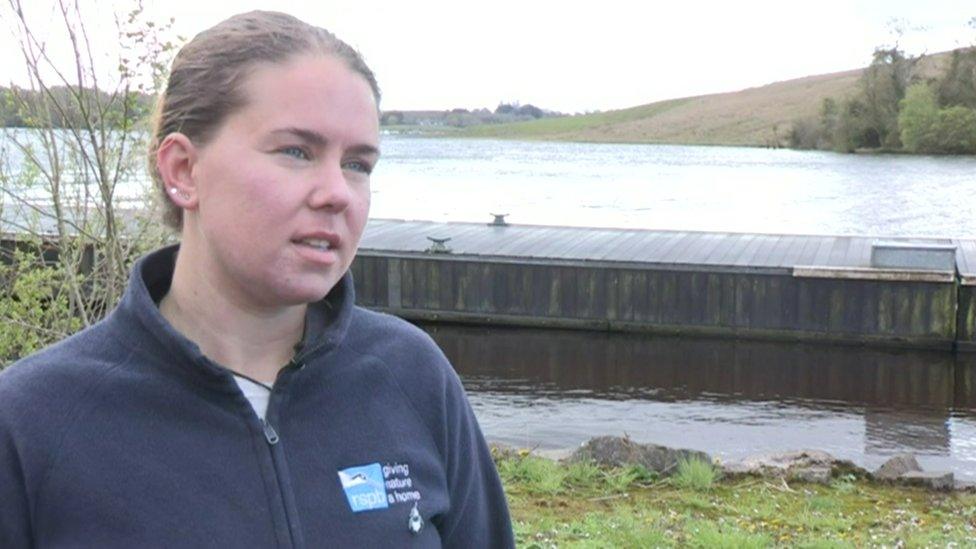Curlew: Record-breaking NI breeding season brings renewed hope
- Published
The success of the latest curlew breeding season is unheard of, says Katie Gibb of the RSPB
There is renewed hope for one of Northern Ireland's most endangered birds after a record-breaking breeding season.
Sixty-nine curlew chicks were recorded at Glenwherry, County Antrim during 2022, said RSPB NI.
That is more than double the number that fledged from nests there in 2021.
The curlew is at risk of extinction in Northern Ireland within the next decade, with numbers declining by 82% since 1987.
Farmers and landowners have been given advice on habitat management to help support the ground-nesting species.
The number of curlews returning to breed in Glenwherry has declined in recent years.

"Every chick counts when it comes to curlew in Northern Ireland," said RSPB conservation officer Katie Gibb
Katie Gibb, RSPB NI's conservation officer for the area, said the 2022 results could mark a turning point.
"What this season means is that in the next five years we could have over 30 new pairs return to the area to breed, which would be a massive and healthy influx of young, fertile, new genetics for this population," she said.
"The number of chicks we have seen fledge this year is not just heartening, it is unequivocal proof that conservation and landscape-scale nature protection works, and should remain a priority in tackling the biodiversity crisis."
'Game-changer for conservation'
Those protection works include helping farmers implement more nature-friendly practices through DAERA's Environmental Farming Scheme and support from projects like Curlews in Crisis, external.
Temporary electrified fences were installed around nest sites to protect the birds from ground predators. There were also targeted measures to control the number of other predators.

The curlew is at risk of extinction in Northern Ireland within the next decade
"It really is a case of every chick counts when it comes to curlew in Northern Ireland," Ms Gibb said.
She said in the last year the team at Glenwherry had installed the highest number of targeted nest fences - which protect nesting chicks from predators - at a single site in the UK.
"The fences, and knowledge of the pairs gathered from previous seasons, have been a game-changer for curlew conservation on our site," she added.
She described the increase in hatching rates, from about 40% to 70%, as marking "a real turning of the tide for curlew conservation on the Antrim Plateau", external.

Amy Burns said there could be more chicks hatching across Lower Lough Erne, but the terrain of islands makes it difficult to monitor
Almost 8,000 hectares in the plateau, which include Glenwherry and the Antrim Hills, were surveyed to find the nests for monitoring.
In County Fermanagh, another 11 chicks were recorded as successfully leaving the nest at the Lower Lough Erne RSPB NI reserve, with four of the broods hatching on the same day on the same island.
The charity's estate manager, Amy Burns, said there could be more, because the terrain of islands, scattered across the lough, is difficult to monitor accurately.
"A total of 23 pairs of curlew were recorded hatching young this season in this area, with 18 nests located, 17 of which successfully hatched full clutches," she said.